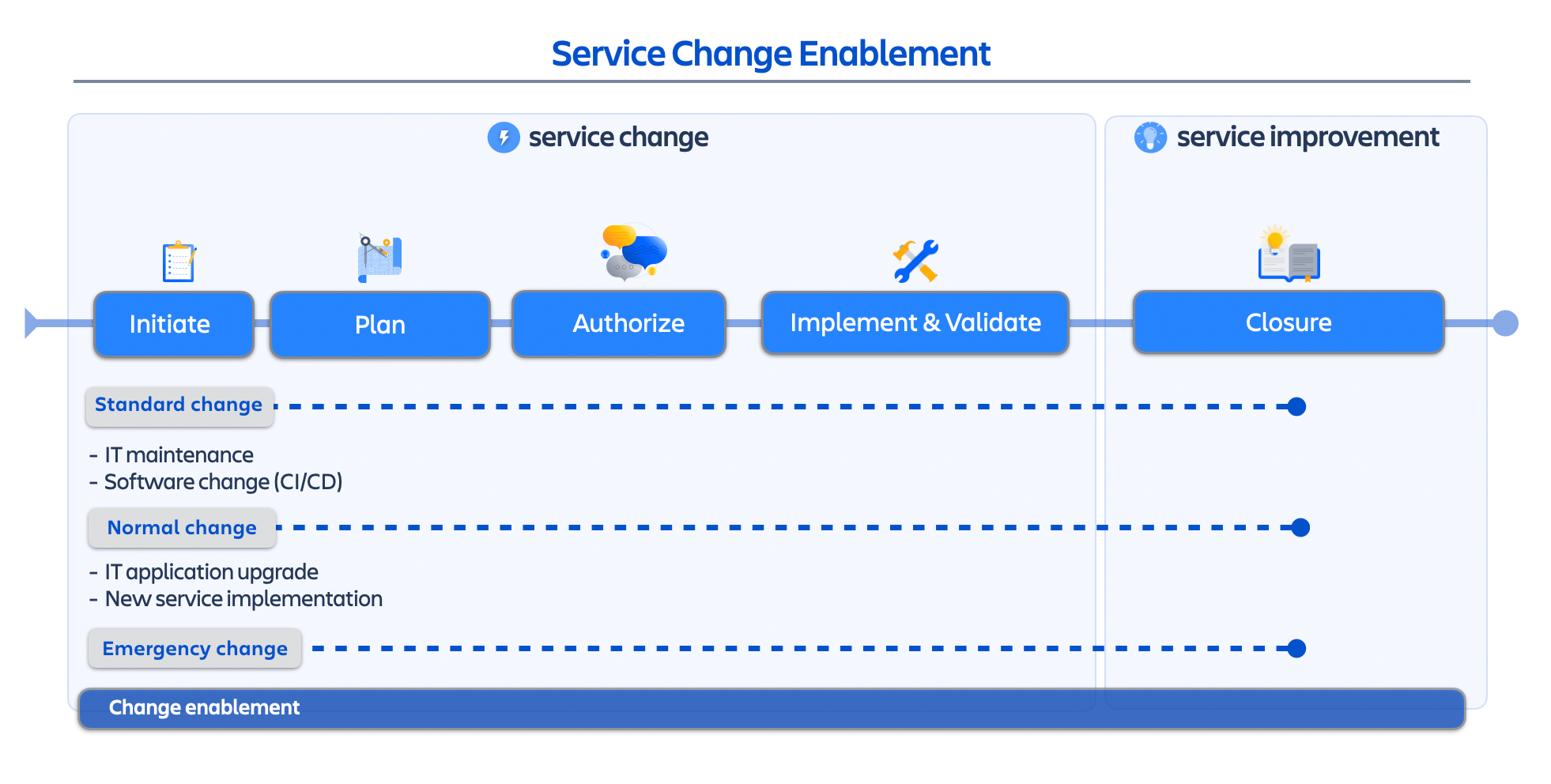Process a change record
Outcome | Your team will understand how to enrich a change request and ensure that it’s approved. |
|---|---|
Processes | |
Practice area(s) | Change enablement and incident management |
Product(s) in scope | Jira Service Management, end-users, and customers |
Role(s) | Team members |

Step | Process | Notes/References |
|---|---|---|
1 | INITIATE Submit a new change request | |
2 | PLAN After the submission, the team and change manager review the details and then add/amend the change request. 1. Reviewing the change request may require you to add additional information to the change request to ensure a higher chance of a successful implementation. 2. Evaluate if there are any other related services/applications that may be affected or within the scope of the change. Note: The goal of this step is to ensure that all relevant information has been captured and supporting work has been linked. | |
3 | PLAN After review, the change owner/team plans to implement the change. 1. The change manager will consult the change calendar to ensure no conflicting changes are planned in the schedule. 2. Consider what the appropriate communication plan should be. Audiences of communication may include: | |
4 | AUTHORIZE Depending on the type of change and internal guardrails, specific levels of approval may be required. - Standard changes are typically low-risk, may only need approval from the change manager (or require no approval), and are fast-tracked to implementation. - Normal changes traditionally require both change manager and CAB approval. - Emergency changes may require approval or authorization before implementation, depending on the service or application. Definitions of the types of changes, and the related level of approval needed, will vary significantly based on the internal processes in the organization. For service teams getting started with change management, we recommend starting with a light approval process to avoid turning change management into a giant bottleneck to getting work done. | |
5 | IMPLEMENT & VALIDATE After finishing the above review and authorization steps, next, the team implements the change on the scheduled date. | |
6 | CLOSURE After implementation, the change manager closes the request. 1. After implementing (or attempting to implement) the change and updating the documentation, close the original change request. 2. Link any new and all supporting documents and artifacts to the change. |
Next step:
Manage change riskWas this content helpful?
Connect, share, or get additional help
Atlassian Community